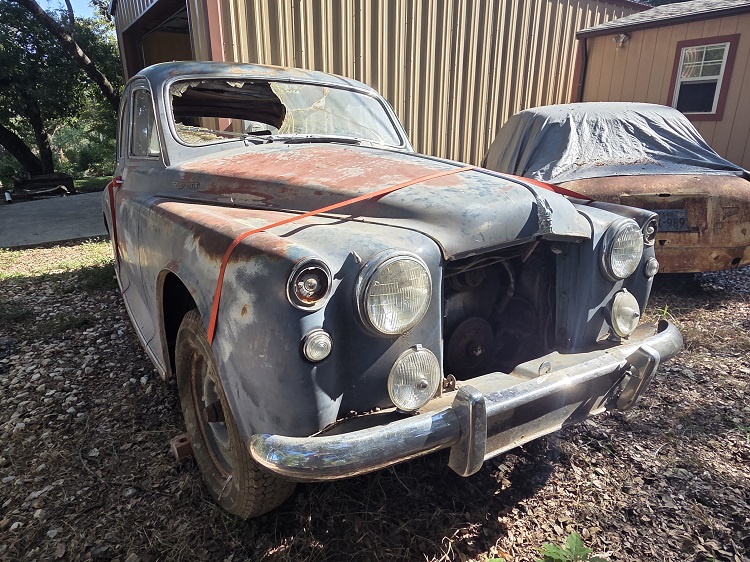Rover P4 and P5 Saloons
Return to Home
Return to Resources
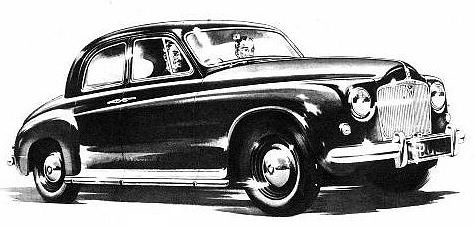
Welcome to Jon's small corner on the Internet dedicated to the restoration and stories behind the collection of Rover P4 and P5 saloons manufactured by the Rover Company in Solihull, England. The collection is located in central Texas near Austin, you are welcome to contact me if you're interested in visiting.
The Collection
- 1953 P4 75 - "Moneypitty"
- 1953 P4 75 - "Ivory"
- 1958 P4 105S - "James"
- 1963 3-litre P5 Mark II - "Velvet Cake"
- 1966 3-litre P5 Mark III - "Sir Henry"
- 1968 3.5-litre P5B - "Nigel"
The Story
What is a Rover?
If you had asked me before 2018 if a Rover ever crossed my mind as a potential classic car to purchase, my answer would have been "What is a Rover?" So you might be wondering how I ended up in the Rover world. The story started in late 2017 when I started chasing a 1940 Buick Super that had been on and off the Austin, Texas Craigslist for the most part of 2017. The previous owner struggled to sell the Buick and once we finally came to an agreement on a price, the owner had a 1953 Rover P4 75 sitting in the driveway next to the Buick that he wanted me to take off his hands. At the time, I had never heard of Rover and had no idea of its desirability so I threw out a lowball price of $200 for the Rover to ensure the Buick purchase was not in jeopardy. I figured I would not lose much if I decided to restore or resell the Rover.
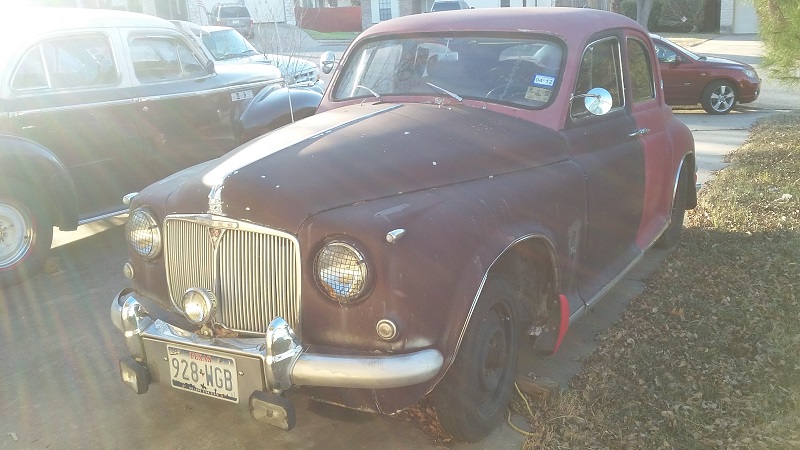
After I had the Buick and Rover towed back to my home, I ended up researching and learning more about the Rover Company and the P4 cars. One of my biggest concerns with antique foreign imports was sourcing parts - especially simple items we often take for granted like weatherstripping. To my surprise and relief, the Rover P4 cars are still beloved in England and there are a number of vendors that sell a wide variety reproduction parts in the UK.
I spent the next 18 months learning how to do a full frame-off automobile restoration on this Rover and completed it in time for the 2019 Texas All British Car Days (TxABCD) show held in September. I documented the restoration process of this 1953 P4 75 that I lovingly named "Moneypitty."
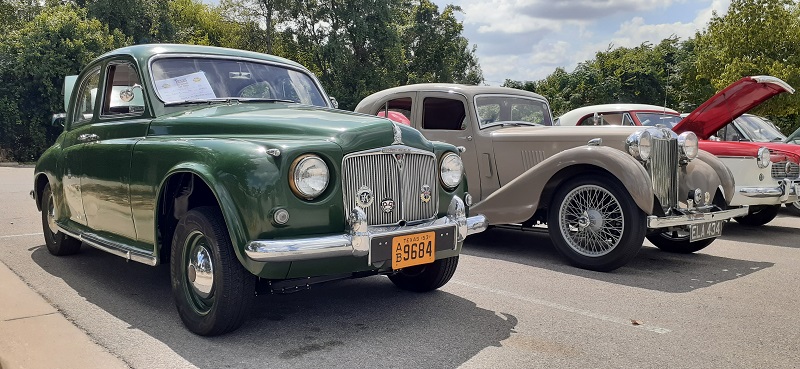
The saga continues...
At the 2019 TxABCD car show, my restored Rover P4 was the only Rover representation at the entire show. At the show, I was approached by a friend of a fellow Rover collector named Kent, who lived in San Antonio, Texas. Due to health problems, Kent wanted to sell his entire collection of Rovers, Land Rovers, and Triumphs. The local club in San Antonio didn't have any Rover expertise, so they were looking for anyone who had some knowledge of Rovers. I was the only one at the car show with a Rover so I volunteered to visit Kent and help appraise the collection given that I was somewhat familiar with the costs involved with restoring a Rover.
I was excited at the chance to see an original Rover - unlike the heavily modified Rover in poor condition that I had started with. After meeting Kent in person at his home in San Antonio, I learned that he had medical challenges and was unable to provide details, history, or valuation of the cars, hence the reason the family needed help with the sale. Then I went to his "Rover Ranch" where I saw at least a dozen Rovers, mostly P6, lined up outside on the property. Kent had a large 40x60 shop where he housed parts and current projects. Of all the cars Kent had on the property, the three cars that caught my attention were an original ivory 1953 P4, a rusty two-tone charcoal/marine gray 1966 P5 Mark III, and a Bordeaux red 1968 P5B all in various project stages of incomplete repair and restoration. The P4 and P5B were housed in his shop, and the P5 Mark III was left outside in the elements because it was considered a parts car.
I joined the Rover Club of Canada and reached out for help to advertise the P4 and P5 projects for sale because initially I had not planned to purchase any of them. After a few months, it was clear that selling project cars with poor documentation, title issues, and disorganized parts was a major challenge. In Spring 2020, I ended up buying the P4 alongside with two P5s for one price and rounded up all the parts that appeared to be related to any of these cars that I eventually sorted through in the next couple years. At this point, I ended up with an instant small collection of 4 unique Rovers. My goal was to have each Rover restored and driving to take to car shows to delight spectators as these Rovers would easily be the only Rover marquee at any car show in the USA.
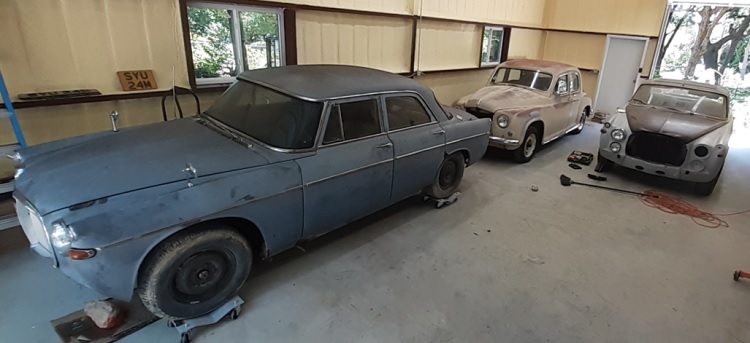
Another wayward Rover joins the collection
While trying to track down the ownership history of the 1966 P5 Mark III that I had purchased from Kent because it was missing the title, I dug through the rovernet.org email archives and found out that Kent had emailed about acquiring the 1966 in a trade for his white 1963 P5 Mark II. I was able to make contact with the previous owner, Gordon, who lived in Virginia and learned that the car was not in his name either. He had bought the 1966 from Bo in Illinois in 2009. Gordon was disappointed by the severe body rust and corrosion that he quickly lost interest in the 1966. I was able to get in contact with Bo who still remained the legal owner of the 1966 and obtained a duplicate title to transfer to me. Bo also shared his story about the 1966 and told me that he knew the first owner who worked for the British Consulate in Miami, Florida where the car was first shipped and registered to. Bo was the second owner when he bought the car in 1970 and used it as his daily driver until it was parked in the 1980s and sold in 2009.
In the process of emailing back and forth about the 1966, Gordon mentioned that he still had the 1963 P5 Mark II that Kent had traded to him and was looking to sell it after about 10 years of ownership. He drove the 1963 for about 400 miles total during this time and decided it was time to pass it on to the next Rover enthusiast. I was intrigued by the prospect of buying an original North American specification LHD P5 survivor that was in running and driving condition in need of minimal TLC. The challenge I ran into with restoring my first P4 was having no reference for comparison for how things were assembled, so the 1963 provided an opportunity to have something intact to look at while restoring the 1966 and 1968 P5 projects. So I ended up buying the 1963 from Gordon and shipped it from Virginia back to Texas in summer 2020! It accompanied my 1953 P4 in the 2021 TxABCD show.
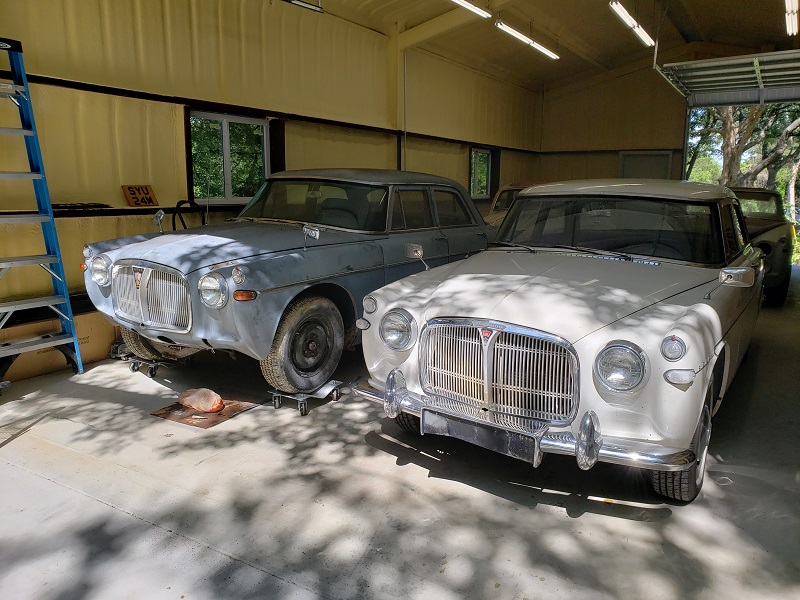

Restoring a 1953, take two!
I decided to start restoring the second 1953 Rover P4 75 on the side performing mechanical repairs while focused on the 1940 Buick Super project from 2020 to 2023. After the Buick project wrapped up, I accelerated restoration progress on the P4 project and finished it at the end of 2024. This was a much easier project because it was in better and more original condition than the first one!
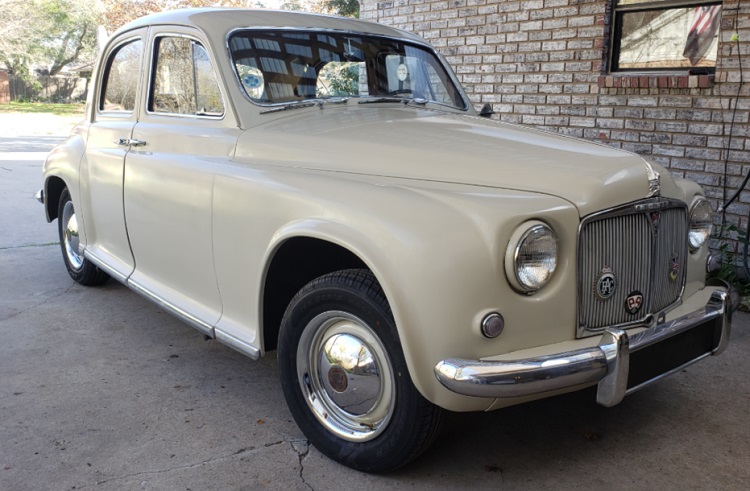
The P5B project!
After the second 1953 P4 project wrapped up, I started picking up pace on the 1968 P5B restoration. Stay tuned for more restoration notes!
Rovers keep finding me!
I came across a Facebook Marketplace ad for a 1958 P4 105S located in rural central Texas located about a hour away. It was in terrible condition, similar to my first 1953 so I was not keen on taking on another basket case in need of extensive restoration, but I immediately recognized the rarity of this car being a LHD manual transmission model with the 105hp engine of which only 148 were made. I also had never owned a later model P4 with the redesigned front and rear fenders that look similar to the P5 models. The previous owner hauled it from the desert in Moffat, Colorado next to the Great Sand Dunes National Park in 2016 where it sat for probably multiple decades. The owner was moving and wanted the car to go to a good home instead of being scrapped so I picked it up for $500. Interestingly, the engine in this car turned out to be a 1953 model, but I had the exact 1958 105 engine it needed thanks to Kent's parts stash that I had collected in 2020!
